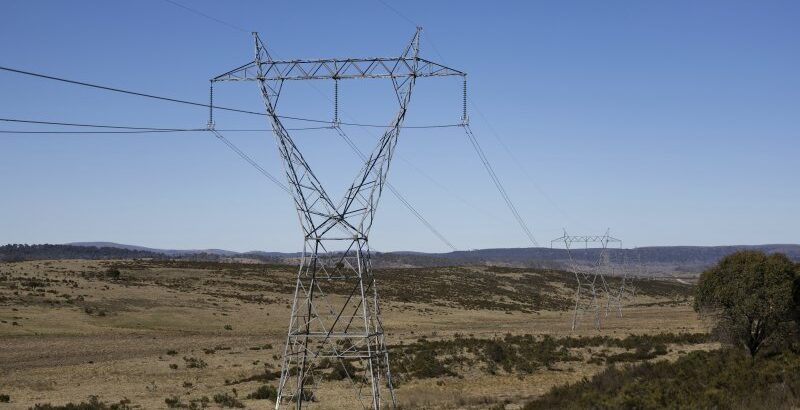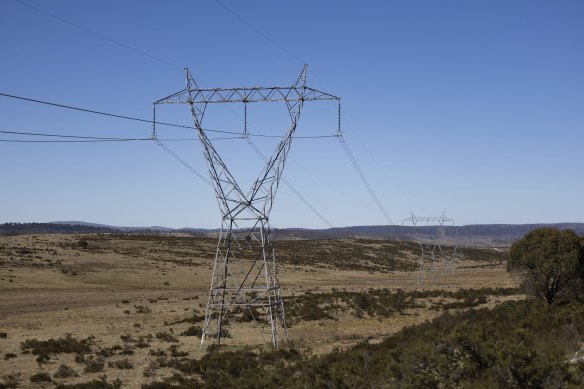Save articles for later
Add articles to your saved list and come back to them any time.
A long, hot summer with high bushfire risk is set to drive electricity demand to a one-in-ten-year high, forcing the energy market operator to pay large industrial power users to cut their power use to reduce the likelihood of blackouts.
The Australian Energy Market Operator’s (AEMO) summer readiness report, released on Wednesday, confirmed it was making offers to big power users such as smelters and processing facilities to reduce their electricity use over summer to reduce pressure on the east coast grid.
Hot dry weather is raising the risk of bushfires taking out powerlines and interrupting electricity supply. Credit: Alex Ellinghausen.
An El Nino weather system is forecast to create heatwaves, which will result in spikes in electricity demand as many households switch on air conditioners when the mercury rises.
Hot, dry weather also raises the risk of bushfires destroying powerlines and interrupting supply.
Energy Minister Chris Bowen has been meeting regularly with state counterparts leading into summer to coordinate preparations.
“We are working to ensure we are as best prepared as we can be for summer, particularly due to El Nino and a higher chance of extreme weather events,” Bowen said.
AEMO executive general manager of operations Michael Gatt said the energy sector had significantly reduced the risks to the grid since the weeks of chaos for the energy market in June last year, when governments pleaded with households to cut their electricity amid a series of unexpected coal plant failures.
During that time, AEMO was forced to make the unprecedented move to halt trading in the national energy market and take command of power supply.
But since then, the capacity of coal-fired power plants has bounced back to add around 1500 megawatts of so-called dispatchable power, and the expansion of the Tallawarra gas plant in NSW is expected by the end of January 2024, which can be called on to supply power as needed, boosting the security of electricity supply.
“The entire industry has been focusing and continues to focus on managing possible risks for the summer ahead, particularly during high-demand periods,” Gatt said.
AEMO’s reliability standard, a conservative measure designed to prevent any disruption to electricity supply, requires at least 99.9994 per cent of forecast customer demand to be met each year and under this measure, Victoria and South Australia are forecast to breach the limit this summer.
The forecast breach triggered AEMO to kick off negotiations with large energy users, who will be paid compensation for cutting their use in the summer period.
Global analyst Rystad Energy released a report last month that found Australia had the most volatile electricity market in the world.
Rystad assessed the differences in prices between the highest and lowest point during one hour of trading in 39 markets around the world. It said that the variability was the greatest in Australia, due in part to natural disasters like bushfires and cyclones that damage infrastructure and interrupt electricity supply and are becoming more frequent due to global warming.
Cut through the noise of federal politics with news, views and expert analysis from Jacqueline Maley. Subscribers can sign up to our weekly Inside Politics newsletter here.
Most Viewed in Politics
From our partners
Source: Read Full Article

